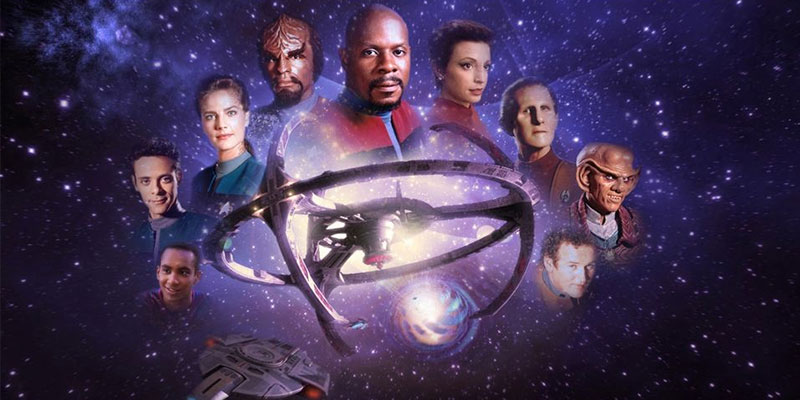It is hard to believe that 28 years have passed since Star Trek: Deep Space Nine premiered. The intervening years have seen the Star Trek franchise, and the medium of episodic television, change in ways that would never have been predicted in 1993, but in some ways, DS9 helped to begin that evolved into today’s “event TV” environment. DS9 achieved this by boldly going where no Trek had gone before, and where it has not been since. Here are a few ways in which DS9 deviated from what had been expected of a Star Trek series and thus helped to spearhead modern television trends.
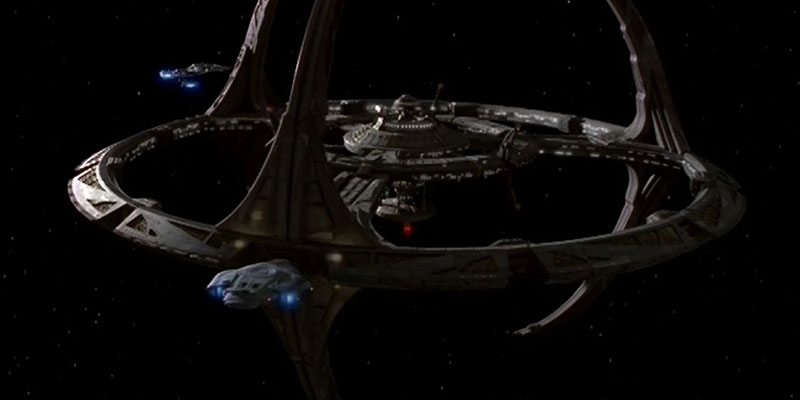
THE SETTING
DS9 moved its setting from a starship seeking out new life and new civilizations to a space station where those would come to it, an interesting contrast from previous series and films. While there was some trepidation within the fan community when this news first broke, DS9 would prove itself to be a worthy successor to The Original Series by the end of its seven-year run.
DS9 itself became as essential a character as any in the cast. As a former Cardassian mining station, it looks like nothing else seen in Star Trek, and like the flesh and blood people which populated it, the station grew and changed as time passed, with the Promenade and crew’s quarters becoming warmer and more inviting even as the station gained sharper teeth to defend itself from the nefarious Dominion.
In keeping with the traditions of Star Trek, the unknown still beckoned to be explored, and the station is moved by the end of the pilot episode to the mouth of the newly discovered Bajoran Wormhole, a shortcut to the unexplored Gamma Quadrant of the galaxy. Here was an opportunity to see strange new worlds each week even with a static setting, as well as to create a new and at times terrifying adversary in the Dominion, a powerful totalitarian government that used the formidable Jem’Hadar as a tool of domestic and foreign policy.
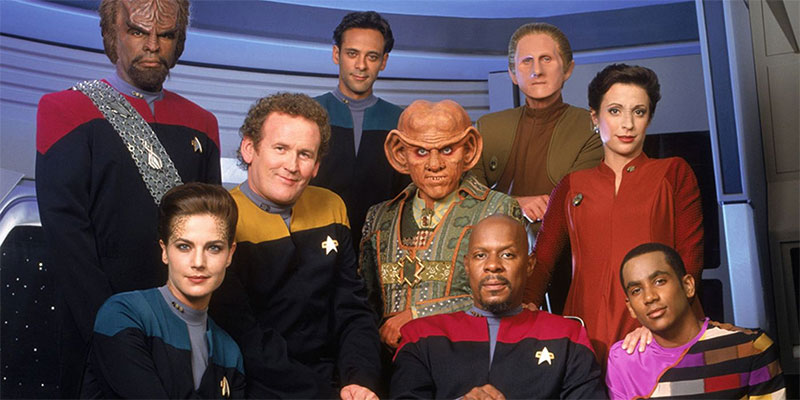
THE CAST
Every Trek series has benefited from a strong cast, and a discussion of DS9’s merits would be incomplete without a mention of the show’s particularly vibrant and well-developed one. DS9’s main cast was varied and noticeably developed as early as the pilot, from Kira Nerys, the station’s first officer and former freedom fighter, to Jadzia and Ezri Dax, hosts to a centuries-old symbiont with lifetimes of memories, to Constable Odo, a no-nonsense shapeshifter with a heart of gold. These characters would continue to grow over the series’ run, more so than any Trek series before or since.
Some of DS9’s best stories centred on characters who were not part of the main cast, like the Ferengi Rom and his son Nog, the villainous Cardassian Gul Dukat, or the wise hologram Vic Fontaine. Among the best of these was Elim Garak, ostensibly a plain, simple tailor living on the station, but in time new dimensions in his character unfolded, making him fascinating and, at times, chilling.
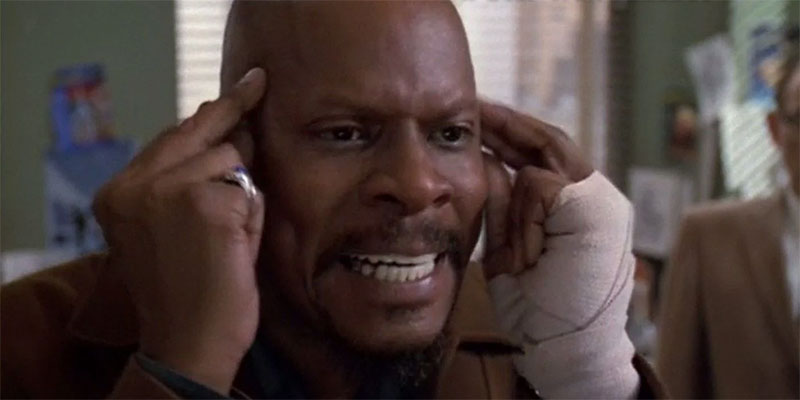
THE WRITING
DS9’s writing staff, led by Ira Steven Behr, endeavoured to tell different kinds of Trek stories in the hallowed tradition of The Original Series and The Next Generation, viewing real-world issues like terrorism and social upheaval through a 24th-century lens. Particularly of note were discussions of racism, religion, and war.
In the classic s6e13 “Far Beyond the Stars,” the writers told the story of Benny Russell, a science fiction writer in 1953 dealing with racial injustice and inequality on the staff of a prominent science fiction magazine. Within the context of the show, this was told as a vision from the Prophets of Bajor, and as such the characters are played by our principal and supporting cast. Benny writes deep stories about the Black captain of a space station and hits walls of prejudice built up by White members of the magazine’s staff as well as outright racism outside work. The episode, directed by Avery Brooks himself, has been regarded as the best of Deep Space Nine’s run and one of the best in the entirety of Star Trek.
Star Trek had historically dealt with many different issues, but one which wasn’t tackled very much was religion. DS9 dove into religion by having Sisko become the Emissary of the Prophets, a significant spiritual icon and leader among the Bajoran people. Much like his position as commander of DS9, Sisko was reluctant to embrace this new aspect, but over time he did so fully, becoming a true believer. Characters discussed their spirituality without reservation as the show progressed. And even though his people killed their gods, Worf would show a great reverence for Klingon tradition and spirituality in the lead up to his wedding to Jadzia.
Many in the real world believed the end of the Cold War would be the end of all war, but we were quite wrong. This would be reflected in DS9 as the main arc of the series spiralled toward open war. The writers took care to tell stories that reflected the effect war has on individuals, perhaps most notably in the episodes “The Siege of AR-558” and “It’s Only a Paper Moon” where Nog, Starfleet’s first Ferengi officer, loses his leg in battle and copes with his new prosthetic as well as the disbelief with which every injured soldier must contend. Stories like these bring to life realities of war the everyday viewer may not have been cognizant of.
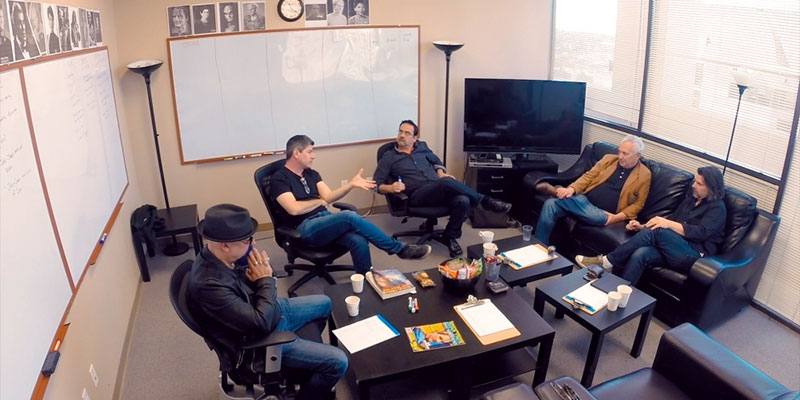
THE FUTURE
One question in this discussion remains to be addressed: How did DS9 help to develop today’s event television?
While revolutionary in character and content, the largest of DS9’s contributions to the future of television storytelling is arguably the use of narrative arcs. DS9 picked up and ran with various plot threads laid out throughout its run, making even the standalone episodes required viewing to get the full story. Season 6 took this a step further with a six-episode arc that told a continuous story, something never done in Trek before but has since become essential. Season 7, and the series, ends with a ten-episode arc serving as the grand finale. Such arcs were not new when the series initially aired, but their use in so prominent a franchise as Star Trek helped to prove that audiences had the attention span to continue watching a show employing such an arc. Today, virtually every television show on air and streaming employs season-long narrative plans, in some cases as deeply detailed and meticulously plotted as DS9’s two short arcs.
Modern event television owes a great debt to Star Trek: Deep Space Nine, and fortunately, the time has been kind to the series, as, thanks to the advent of streaming, the show is more widely available to be binged and appreciated by the masses as it has by Trek fans for the last 28 years.

